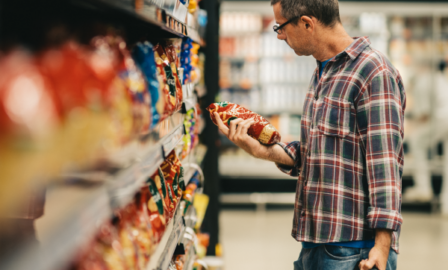2021 Food Tech Trends
The 2021 Food Tech Trends Report was produced in collaboration with innovative food industry software provider FoodLogiq. Visit FoodLogiq.com to learn more.
The COVID-19 pandemic has disrupted businesses of nearly every size and shape in the food industry. The global food system has been tested in a way unlike any time prior as both businesses and consumers faced the realities of its inherently complex and intricate nature.
Widespread lockdowns and reduced mobility had immediate impacts on food purchasing behavior early in 2020, leading to a 57% increase in retail food sales when comparing March 2019 to March 2020 and a 51% decrease in sales at restaurants and other dining establishments comparing April 2019 to April 2020. Needless to say, this level of disruption wasn’t unique to consumer purchasing behavior alone. Businesses in the food space felt the crunch of wildly fluctuating supply and demand, reduced labor availability, and myriad food safety and security challenges.
Download the Full 2021 Food Tech Trends
For many businesses, the pandemic highlighted the significant potential impact of the issues and risks that had existed but been deprioritized for years in the industry. As a result, businesses began investing earnestly (and at times rapidly) into technologies and digital capabilities to address the immediate effects of the pandemic and enable greater resilience for the future. This broad awareness and investment resulted in something of a banner year for agrifoodtech. Agrifoodtech startups raised $26.1 billion in 2020 with expectations that the total number would settle to over $30 billion once all deals have been accounted for.
Emergent Tech Impacting the Supply Chain
Direct to Consumer
Personalization and an evolving digital interface are becoming driving forces in the food retail market.
Machine Intelligence
We are leveraging data in smarter ways, and benefiting from next-gen robotics and computer vision techniques.
IoT
Sensors, the Internet of Things and RFID are laying the groundwork for a more connected and optimized food supply chain.
Engineered Food
Food engineering is driving sustainable alternatives and more resilient food types, allowing consumers to make more sophisticated, and greener, choices in their diet.
Blockchain
Distributed databases and contracts can increase trust within the food supply chain. What are the best use-cases for blockchain, and is the industry ready to make the most of this technology?



